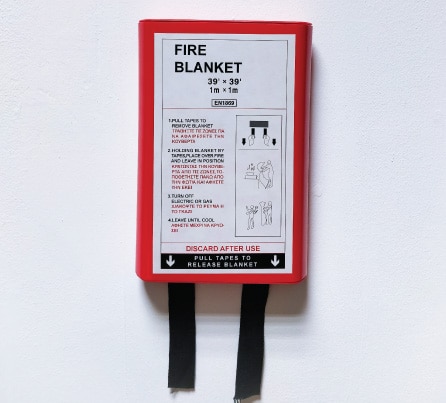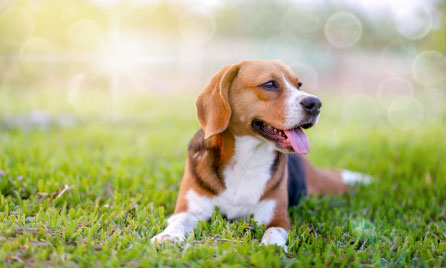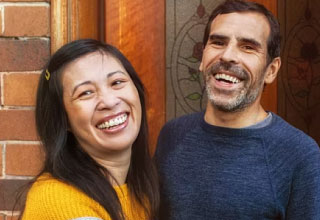- text
-
Cover and benefits are subject to eligibility criteria and terms and conditions, including the limits and exclusions of the insurance policy. Any advice provided is general only and may not be right for you. Before you purchase this product you should carefully read the Home Insurance Product Disclosure Statement and consider the Target Market Determination to decide if it is right for you.
Home safety for common fire hazards.
Having a fire safety plan could help save your most important asset - your home. Fire safety starts with learning about hazards in the home and ways to prepare for an emergency.
Conducting an audit of the current fire dangers in your home can help you minimise risk in the event of an emergency. When conducting an audit, you’ll need to look inside and outside the house. Remember, never leave cooking unattended, note when electric blankets will be left on overnight, clean the lint out of the clothes dryer, and be wary when burning incense or candles.
Kitchen.
Appliances we use in the kitchen could be prone to fire risks. You should regularly check ovens, toasters, and stoves to ensure they're functioning correctly. While cooking, never leave a pan unattended and turn off any gas or electricity immediately after use.
Remember: grease, cooking oil, and alcohol are all highly flammable, so always use them cautiously around any open flames.
Clothes dryer.
Did you know nearly a third of Australians risk household fires by not removing the lint from their clothes dryer?1 Lint can restrict the outflow of heated air, causing your dryer to become overheated. Clean the inside of your clothes dryer and remove built-up lint regularly. If you plan on leaving the house, make sure you turn your dryer off every time.
Electrical power boards.
Proper use of electrical powerboards is an important part of home fire safety. Never overload your powerboards with multiple appliances. Fire and Rescue NSW recommends only using .
Household chemical safety.
Chemicals used for cleaning can be highly toxic and flammable when mixed. Make sure you read the labels on any supplies you own and keep them locked away from children and pets. As part of your home fire safety plan, never mix chemicals and always dispose of them responsibly.

Portable outdoor gas heaters.
As winter approaches, you might be using an outdoor gas heater on your patio or deck. While outdoor heaters keep you warm, they are also prone to fire risks when placed in unventilated areas or near flammable objects. To improve fire safety, make sure they are used in open, ventilated areas and kept away from roofs, awnings, and other combustible materials.
Home heating.
Your oil and gas heaters may be due for a maintenance check. A regular maintenance check will ensure that they are in good condition, efficient and safe. Heaters that aren’t maintained are not only a potential fire hazard, they make for a costly energy bill, too.
Candles.
If you’re using candles for light or aesthetics around your home, never leave them unattended or near flammable objects or materials. Avoid placing candles next to curtains or on tables sitting above carpets. Always put candles on a secure base to reduce the chance of knocking them over.
Fire alarm.
Changing the battery and cleaning the alarm regularly can be a very effective way to protect your family and home from fire danger. If you are renting, in most cases, it’s your responsibility to clean, test, and replace batteries while it is the landlord’s responsibility to supply and install a working smoke alarm.
Gutters.
In the event of a fire, the last thing you want is flammable dry leaves and grass around. Leaves can accumulate in gutters and around the edges of your garden when not regularly cleared out, especially if you have trees that shed leaves in winter.2
Fire prevention equipment.
Fire prevention equipment is an integral part of your home fire safety plan. Let’s look at different types of fire safety equipment and how they can be placed in your home.
Smoke alarms.
In most states across Australia, you legally must have a smoke alarm installed in your home (the same goes for residential buildings, i.e apartments). While smoke alarm laws can differ state by state, the consensus is that they’re an essential fire safety feature. If you live in a house with multiple levels, it’s advised to install a smoke alarm on each one.
Residential fire extinguishers.
Fire extinguishers can be a lifesaver, but you must use them correctly. Different coloured fire extinguishers are used for different types of fires. There are 6 different classes of fires:3
Class A: General combustibles
Class B: Combustible and flammable liquids
Class C: Flammable gases
Class D: Combustible metals
Class E: Electrical devices and appliances
Class F: Cooking fats and oils
Different types of fire extinguishers are required depending on the type of fire. This table shows the type of fire extinguisher you need for each fire type.

Residential fire sprinkler systems.
While smoke alarms are an essential part of your home fire safety plan, going a step further to install fire sprinklers can greatly improve the safety of everyone living in your home. According to Fire and Rescue NSW, fire sprinklers are only mandatory in all residential dwellings above 25 metres in height.
How much does a fire sprinkler system cost in Australia?
On average, installing fire sprinklers in a new dwelling costs around 0.5 - 1.5% of the total cost of building a new house.4 Fire sprinkler systems can also be installed in existing dwellings.
What size building requires a sprinkler system in Australia?
Fire sprinklers must be installed in all residential dwellings above 25 metres in height.
How effective are residential fire sprinklers?
According to the Home Fire Sprinkler Coalition, death rates and injury in homes are significantly reduced when fire sprinklers are installed.5 Fire sprinklers also reduce damage to your furniture and personal belongings.

Fire blankets.
A fire blanket is another type of fire safety equipment you can keep in your home. A fire blanket is made out of woven glass fiber fabric, which is a highly flame-resistant material.
What is a fire blanket used for?
Fire blankets can be used to put out small, isolated fires or wrapped around people if their clothes catch fire. While they are a good piece of fire safety equipment to have, they can only be used once.
What fires can you use a fire blanket on?
Fire blankets can be used on Class F fires. A Class F fire involves cooking fats and oils, so you should keep fire blankets in the kitchen.
Fire safety plan and education.
Here’s a breakdown of how you could approach your fire safety plan based on what kind of dwelling you live in.
Home fire escape plan.
While prevention is the best way to avoid a fire, having a fire escape plan in place will allow you to act quickly in the event of an emergency. Taking stock of the current fire dangers in your home will help you minimise risk and put plans in place for what to do in the event of a fire.
How to make a fire escape plan.
According to , these are the key tips on how to create a fire escape plan:
Draw a floor plan of your home that includes two ways to escape from each room.
Plan your escape routes and confirm everyone knows where they are.
Make sure these exits are always clear and never blocked by furniture or equipment.
Keep a spare set of keys near locked doors and windows so you can easily open them.
Decide on a meeting place after evacuation.
High-rise fire safety tips.
If you live in a high-rise building and there’s a fire, you:
Shouldn’t use the elevator under any circumstances. Instead, take the fire escape stairs.
Follow your building's evacuation plan and respond immediately to any alarms or emergency sounds.
Lift safety in the event of a fire.
Never use a lift in the event of a fire, they aren’t fire-resistant. Your high-rise building should have designated fire escapes on each floor.6
Fire safety education for dependants.

A home fire safety plan starts with education for everyone. No matter who you are or where you live, it’s essential to learn and pass on valuable information about fire safety, so everyone is better prepared in the event of an emergency.
Fire safety for pets.
Our pets are an extension of our family, so keeping them safe is a priority. Here are some fire safety tips for pets:
Keep them away from candles, lamps, and other types of heating that can easily knock over.
Some pets are prone to chewing, so keep covers over cables and wires for appliances.
Keep pets away from stoves while you’re cooking food.
Fire safety for seniors.
If you have older family members living in your home, take extra care to ensure they’re prepared in the event of a fire.
Make sure the smoke alarm near your older family member’s room is working and check the batteries regularly.
Include them in your fire safety plan and ensure they know where all the emergency exits are in your home.
During winter, make sure their electric blanket wires are laying flat and undamaged.
Fire safety for children.
Your kids need to be equipped with a plan in the event of a fire. While teaching them about fire safety, you can:
Run a practice drill on how to evacuate the house during a fire. Show them where the exits are and the spot to meet outside.
Teach them to stay away from fireplaces, candles, heaters, and stoves while food is cooking.
Teach them to turn off powerpoints before plugging in appliances.
Winter and holiday home fires.

With the drop in temperatures, keeping your home safe from fire in winter is important. You might be turning up the heater and dusting off those electric blankets, but remember to check they’re working properly before you start using them.
Testing your heating equipment.
If you haven’t used your electric blankets in the last six months it will be worth testing them before leaving them to warm the beds for long periods. Things to be wary of are signs of wear and tear and lose plug connections. If the electric blanket is physically fine test it by laying it flat on top of the bed first to ensure that it is heating up correctly. If you have any doubt about the safety of the electric blanket, don’t risk it, as it can be a potential shock and fire hazards.
Preparing for home safety during Australian bushfires.
Every bushfire season, Australia experiences devastating fires that scar the landscape and leave a lasting impact on many lives. While education programs that focus on prevention and what to do during a bushfire are promoted every summer, the incidence of bushfires continues to rise. The increase can be linked to rising temperatures and changing climate conditions.
Know your risk: what area do you live in?
Many councils have maps available on their website that identify high-risk bushfire areas. If your property falls into one of these areas, you may need to take additional precautions. You can also make sure you are on any available alert lists authorities use during emergencies.
Download the Fire and Rescue bush fire survival plan for your state.
Free bush fire survival plans can help you and your family to prepare, act and survive in the event of a fire. It includes life-saving tips, including how and when to decide to vacate your property if there are any signs of fire, or when the fire danger rating is extreme or catastrophic and your home is not built to withstand a fire.
Monitor each state’s fire alert maps for the latest updates here:
Prepare your home and surroundings.
It is important to assess your home to identify potential fire hazards. Clear fire hazards and general debris so you have a safety zone around your main property. Hazards outside of the home can include overgrown shrubbery close to the house, gutters full of leaves, and sources of open flames, like barbecues or cigarette butts.
Some additional ways to fireproof your home and its surroundings include:
Installing fine mesh screens on your doors and windows.
Using metal sheeting for your roof rather than flammable wood products.
Erecting a security fence that can act as a heat barrier.
Installing a sprinkler system.
Home insurance and fire cover.
Sometimes there is nothing you can do to prevent the spread of fire. However, you can make sure that you have sufficient insurance cover for fire damage to part or all of your home.
Check that your home and contents policy is up to date and the cover is adequate in the event of a fire.




